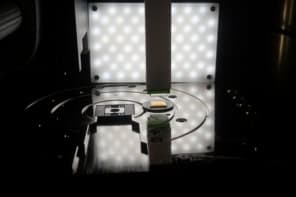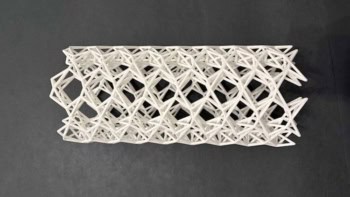
Researchers in the US and Italy have made the first integrated graphene digital circuits that function at gigahertz frequencies. The circuits are ring oscillators and the work could be an important step towards realizing all-graphene microwave circuits, says the team.
Graphene is a 2D sheet of carbon just one atom thick and it – along with similar 2D materials such as carbon nanotubes and molybdenite – shows great promise for future electronics. This is because electronic devices smaller than 10 nm could be made using these 2D materials – at least in principle. Below the 10 nm length scale, devices based on conventional silicon are expected to be too small to function properly and therefore graphene and similar materials offer a route to making ever-smaller electronic devices.
One major challenge facing those developing such 2D devices is speed. Modern silicon processors operate at microwave (gigahertz) frequencies, as do communications chips in devices such as mobile phones. Therefore, any practical 2D device would have to run just as fast. Until now, however, the fastest 2D device – a carbon-nanotube ring oscillator – operates at a lethargic 50 MHz.
Now, a team led by Roman Sordan of the Politecnico di Milano and Eric Pop of the University of Illinois says it has made the first integrated graphene oscillators – with the added bonus that the devices operate at 1.28 GHz. The graphene ring oscillators also appear to be less sensitive to fluctuations in the supply voltage compared with both conventional silicon CMOS devices and earlier oscillators made from the 2D materials.
Final “missing” component
In addition to being used to generate clock pulses in microprocessors, oscillators are also one of the main building blocks of analogue electronics. Microwave electronics, for example, are based on voltage amplifiers, oscillators and mixers. “Graphene amplifiers and mixers have already been demonstrated, so the oscillators we made represent the final ‘missing’ component for making all-graphene microwave circuits,” Sordan says.
And that is not all. The team has also fabricated stand-alone graphene frequency mixers from its ring oscillators. Previous graphene mixers were not stand-alone because they required external oscillators to function.
“We believe that our study significantly advances research in low-dimensional nanomaterials towards practical, high-speed digital and analogue applications, and we hope that it will motivate significant future work in this direction,” says Sordan.
The research is reported in ACS Nano.



